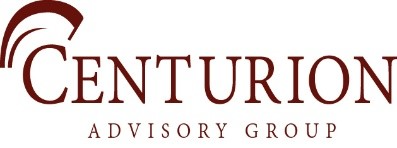Portfolio Design
Our ability to enjoy both time and money freedom depends in part on what we do with our free cash flow. Cash flow may come from earned income, business interests, investment real estate, or other sources. Making good decisions regarding the allocation of cash flow and generating a solid long-term return matters in terms of our financial health.
We have found that when households and businesses do three things regarding finances, they seem to do well. Those three are a) have free or discretionary cash flow, b) build a strong cash reserve, and c) invest dollars consistently for long-term wealth creation. Significant debt and living with a closed hand are both impairments to life quality.
Regarding long-term investment, let’s focus on portfolio design. The question is, for those long-term investment dollars put to work in the public markets (stocks, bonds, mutual funds, ETFs), what works? What is optimal deployment of funds?
What We Have Seen
For at least 40 years, the 60/40 stock/bond model portfolio has worked well for most retail investors, the “millionaire next door” which Tom Stanley wrote about some years ago. This is especially true if portfolios are limited to 8 to 10 funds. And is true whether designed with index approaches from shops like Vanguard or Dimensional Fund Advisors, or cost -effective active approaches from shops such as American Funds, or T. Rowe Price. This is due in large part to a 40-year bull run in bonds combined with three of the last four decades being good for stocks.
We Have Also Seen
Over the last twenty years, we have onboarded clients who have only individual securities in their portfolios, most of which pay dividends. There is often significant unrealized appreciation in these individual positions, making it difficult to justify selling these securities. This has given us much opportunity to study outcomes and to compare a portfolio built of 100% dividend paying securities to a model portfolio of eight low-cost index type funds, with a 60/40 stock/bond mix.
What We Are Watching
We have written about this before, so we won’t spend much time on it here. We are watching disruption which we believe is part of multi-decade cycles. Political, economic, and social tension and strife. Supply and demand challenges. Inflation. Rising interest rates. The last all-time high in the S&P 500 more than a year behind us. And stock valuations still at levels reminiscent of 1929 and 2000. Lack of leadership on the global stage. And debt. Massive debt. On corporate balance sheets, municipal and state balance sheets, and sovereign balance sheets. I understand the MMT argument that sovereign entities may print money indefinitely as long as they control inflation. MMT is being tested. Some estimates put worldwide debt at something north of $350 Trillion, though those numbers are estimates at best.
And what else? Correlations of 1. What does that mean? That stocks and bonds go down together. The thought is that in a healthy public market, bonds should go up when stocks go down. And stocks go up when bonds go down. In 2022 though, as in 2008, both stocks and bonds went down together. So, when both go down together, we say the correlation between them is 1.
What We Have Decided
From a portfolio design standpoint, we have historically used model portfolios as referenced earlier. Not to outperform various retail indices. But with the goal of moving clients toward preferred outcomes in a manner comfortable for them. After spending the last almost ten years in much study, thought, analysis, back-testing, evaluation, and beta-testing, going forward, we will be building portfolios of individual dividend-paying securities, purchased at points where prices are low relative to dividend yield.
We won’t be using bonds as any of us can get 3.5% to 4.25% on money markets and CDs for our reserve funds. We can’t think of a good reason to own bonds at the moment.
It is our firm’s personal and professional opinion that this is not the time to own index funds nor is it the time to own a globally-diversified portfolio of funds. Most funds operate on a defense first strategy, meaning they own anywhere from 300 to 3000 stocks. They are, in effect, simply buying the market.
What Is The Benefit Of Individual Securities?
Capital Gain Control – With individual securities, unlike open-end mutual funds, we have complete control over the timing of taxable capital gain.
Company Ownership – With individual securities, we own companies, rather than simply buying a “market”, whatever that is.
Improved Decision-Making – With a focused portfolio of individual securities, we are forced to make decisions with conviction. We have tested everything we are describing on our personal funds as well as funds of clients who grant us such discretion. We have been very pleased with short-term and long-term results.
Enhanced Gifting – With individual securities, we can tier the gain to maximize the tax benefit of giving appreciated securities.
Cash Return – With our focus on dividend-paying securities, we experience some of our long-term return in the form of dividends, which come to the portfolio in cash. This compares to having to rely completely on capital gain for return, and the need to sell a stock and pay tax on the gain, simply to monetize our return.
Tax Management – With individual securities, we can harvest losses and avoid/match gain in a way which maximizes tax benefit.
Summary
Portfolio design is one element of the decision making process of long-term investing. For those of you who are clients, we will be sharing more detail with you in other communications.
Until we see you again, wishing you only the best.
Warm regards,
Randy Brunson

